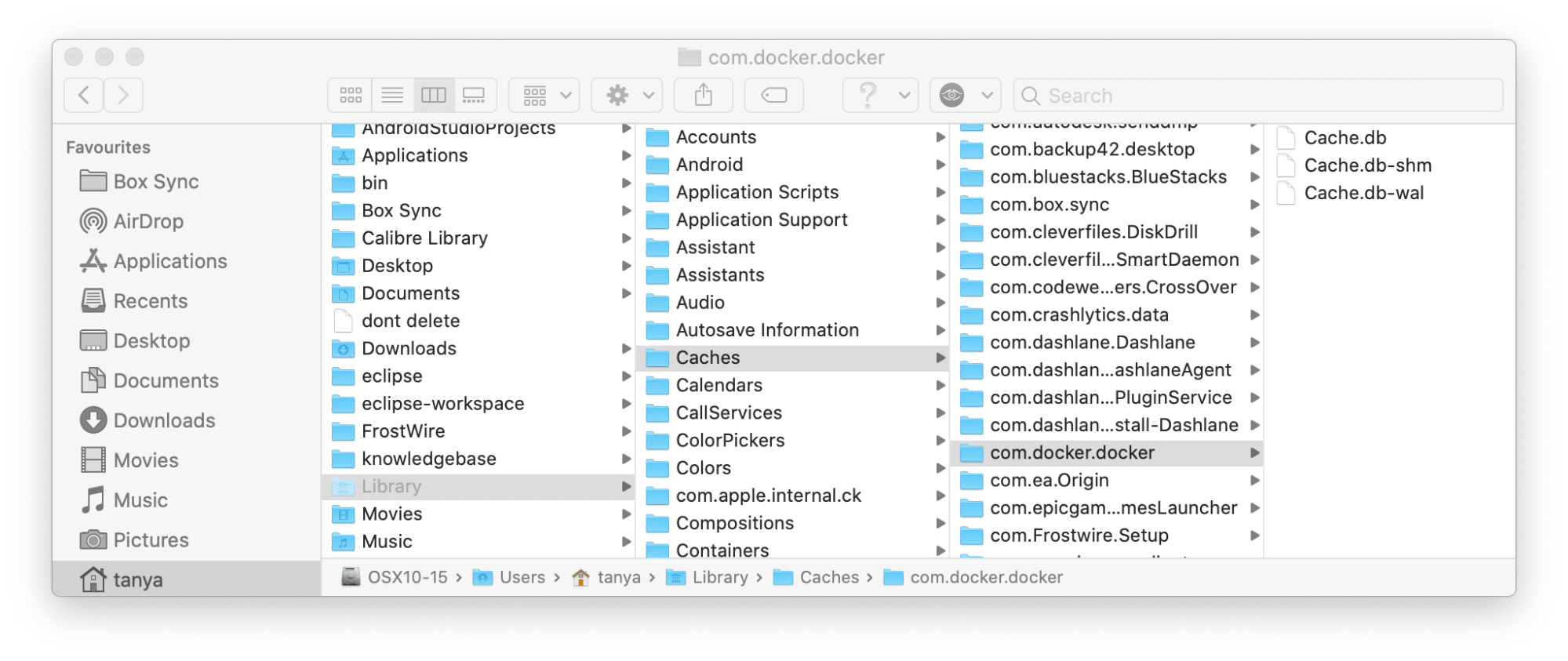
Obviously we still allow service addresses to be configured per-container as needed, but it's nice to be able to have a default that works the same in both environments.
#Docker for mac internal for mac
Now we can use that in our containers as the hostname for services running on the host, and it'll work the same on our developers' Macs (where Docker for Mac internally resolves it to the appropriate magic IP address) and the Linux systems (where it gets looked up in DNS). Then we realized we could put those two things together and add an entry to the local DNS server to make resolve to the dummy interface's address, 169.254.1.1 in our case. Since we're a Consul shop, we add this dummy interface to all our Linux hosts as part of the standard host configuration to let containerized services register with Consul. That address isn't routable from the host's point of view it sort of ends up acting like a second localhost interface, but from the container's point of view it looks like an external address that has to be bridged to the host. TL DR is that you add a dummy interface with a fixed IP address such as 169.254.1.1 that is the same on every host, and make sure host services accept connections on that interface. See, for example, this blog post about getting Docker containers to talk to the host's Consul agent. However, you can get similar functionality using dummy interfaces. There's no direct equivalent in Linux Docker. On Docker for Mac (and Windows), there is a magic hostname that containers can use to connect to services on the host. We run that script via our Makefile as a precursor task before starting containers, and now we always know that our host is accessible.Thought I'd share a little thing we've started doing. Sudo launchctl load /Library/LaunchDaemons/co. its running in a docker container, youre dealing with dockers internal. Sudo chown root:wheel /Library/LaunchDaemons/co. Because it runs K8s in Docker, kind can run on Windows, Mac, and Linux. # It copies a plist script to /Library/LaunchDaemons and enables it via launchctl, # so that this alias will be added automatically at boot time in future. # This adds an alias IP to the lo0 interface of the host.

#!/usr/bin/env bash # Docker containers that wish to access services running on the host (this mac) # need a known IP address for the lo0 interface, 127.0.0.1 will not work. However, there is a recommended solution: you can add a new IP address to the hosts’ lo0 interface, and access services running on host localhost via that new IP. The default loopback interface ( lo0, 127.0.0.1) isn’t available from within Xhyve-based Docker for Mac containers either. Also, if you have no network access, the interface is inaccessible.

Now, you could choose to run host services on all network interfaces ( 0.0.0.0), and point containers to the current IP of the host’s en0, but this requires that you be able to reconfigure your containers every time your mac’s IP changes, and it exposes your host service to your local network. It turns out that this needs a little extra network config on the host. For the proxy to route requests to upstream services, I needed to find an accessible, consistent network interface on the host. I expanded the stack by adding adding a web proxy container, to mimic our production traffic routing locally.

We have traditionally run ruby and nodejs services on our macs, and connected to virtualized databases, which now run in containers. Update: This workaround is no longer necessary as of Docker for Mac version 17.06, which provides a special Mac-only DNS name, which resolves to the internal IP address used by the host.Ī few months ago, I built out a docker-compose-based local development environment for our dev team who had been using a long-in-the-tooth vagrant-based environment to run backend databases.


 0 kommentar(er)
0 kommentar(er)
